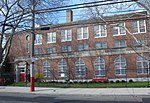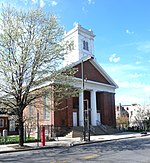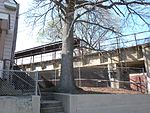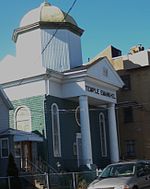Bayonne Bridge
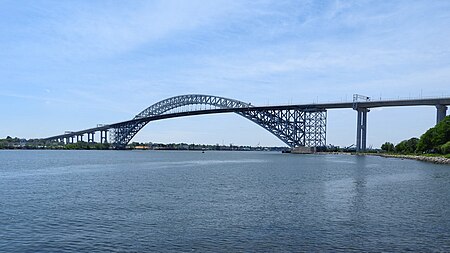
Bayonne Bridge is an arch bridge spanning the Kill Van Kull and connecting Bayonne, New Jersey with Staten Island in New York City. It carries New York State Route 440 (NY 440) and New Jersey Route 440. It is the sixth-longest steel arch bridge in the world, and it was the longest in the world at the time of its completion. The bridge is also one of four connecting New Jersey with Staten Island; the other two roadway bridges are the Goethals Bridge in Elizabeth and Outerbridge Crossing (which also carries Route 440) in Perth Amboy, and the rail-only span is the Arthur Kill Vertical Lift Bridge, all of which cross the Arthur Kill. The original 151-foot (46 m) roadway carried two lanes of motor traffic in each direction, as well as a walkway. Completed in 1931, the Bayonne Bridge was built by the Port Authority of New York and New Jersey, which still operates the bridge. It was designed by Swiss master bridge-builder Othmar Ammann and architect Cass Gilbert. A project to provide increased clearance required to accommodate New Panamax ships began in 2013, and was completed in two stages between 2017 and 2019. The new roadways each carry two lanes of unidirectional motor traffic plus shoulders for disabled vehicles in addition to a separate path for pedestrians and bicyclists, which opened on May 24, 2019. The desired navigational clearance was achieved June 8, 2017.
Excerpt from the Wikipedia article Bayonne Bridge (License: CC BY-SA 3.0, Authors, Images).Bayonne Bridge
Point View Terrace,
Geographical coordinates (GPS) Address External links Nearby Places Show on map
Geographical coordinates (GPS)
| Latitude | Longitude |
|---|---|
| N 40.642 ° | E -74.142 ° |
Address
Bayonne Bridge
Point View Terrace
07002
New Jersey, United States
Open on Google Maps


